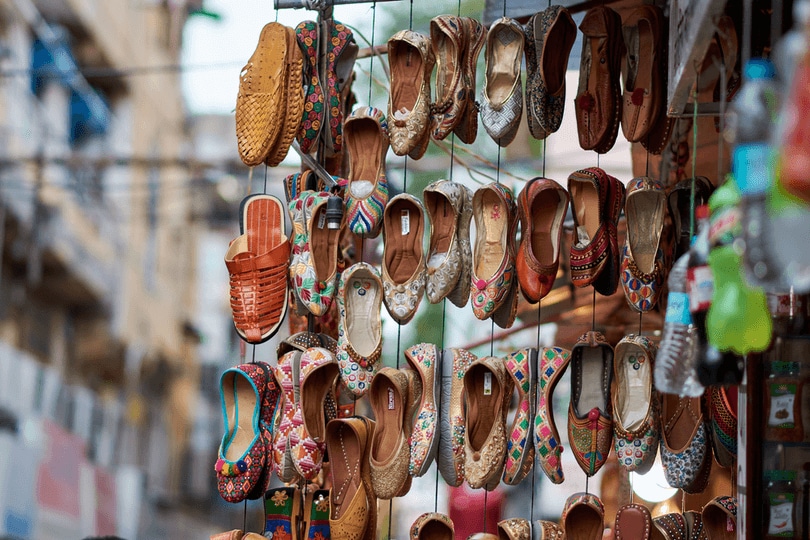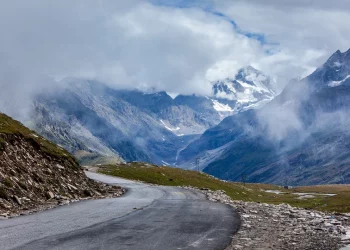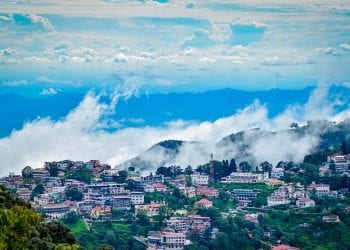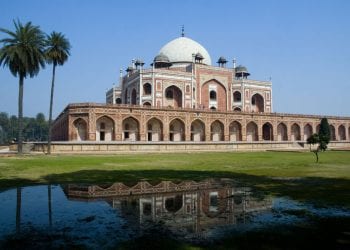Best Attractions and Places to Visit in Jaipur
Introduction
A journey to India isn’t complete unless you spend some time in Jaipur. Often known as “The Pink City” because of the color of its old structures, it is a royal wonderland of culture and heritage, teeming with architectural jewels. Jaipur’s sightseeing places are also a key stop on India’s Golden Triangle, a popular tourist route.
Prepare to be enchanted by the magnificence of Jaipur, Rajasthan’s capital. City Palace provides you a sense of the opulent lifestyle enjoyed by Jaipur’s royal family. The astronomical instruments of the Jantar Mantar observatory, just next door, bring the mysteries of space to Earth.
Depending on when you come, you might be able to attend one of the many events that fill Jaipur’s annual calendar, such as the International Kite Festival in January or the Elephant Festival in early spring or enrolling yourself in the famous Jaipur sightseeing tour.
The Top Attractions and Places to Visit in Jaipur
1) City Palace
For nearly three centuries, City Palace has stood at the center of Jaipur’s Old City, shortly after Maharaja Sawai Jai Singh II decided to relocate his court from Amber. The fairy-tale-like palace, which is still the residence of Jaipur’s modern-day royal family and is more opulent and lovely than you may expect, is protected by towering guard walls.
City Palace is a large complex of buildings built around a succession of landscaped garden courtyards overseeing Jaipur and Lake Palace. It’s more than a sand-colored regal dwelling. The property as a whole is a superb example of Rajasthani and Mughal architecture.
The Chandra Mahal, an attractive structure with curving eaves and domed roofing, is currently home to the current inhabitants. Each of the seven stories is written in a unique style. The main level is included in the admission charge, but to walk upstairs, you’ll need to organize a private tour.
2) Jantar Mantar
Jantar Mantar may appear to be nothing more than a collection of larger-than-life abstract sculptures at first glance. But this isn’t an art gallery; it’s a unique collection of astronomy instruments begun nearly 300 years ago by Rajput monarch Jai Singh II to survey the heavens.
Each of the UNESCO World Heritage Sites 20 or more monuments has a particular role. The gigantic sundial at the observatory, known as Samrat Yantra, is particularly impressive. It generates a massive shadow that precisely counts the time down to two seconds at the height of 27 meters.
The intricate Jai Prakash similarly uses the shadow of a metal plate suspended over a sunken bowl-like structure to chart the passage of time. Other instruments at the observatory are capable of tracking stars and even forecasting eclipses.
3) Hawa Mahal
If you have any preconceived views about how Jaipur’s buildings should look, they most likely stem from the Hawa Mahal (Palace of Breeze). From the salmon-pink, honeycombed front, meant to imitate the Hindu god Krishna’s crown, to the geometric accents and rows of tiny windows, it has all of the distinguishing architectural traits that show in postcards of the city.
The structure was constructed in 1799 to allow royal women to observe events on the street without being seen by the general population. Its 953 windows let in a lot of natural light, making it an excellent summer mansion.
At the palace’s small museum, visitors can learn about the sandstone structure’s history, with the ceremonial armor collection being particularly interesting. You can also take a stroll through the palace’s small corridors. Don’t miss the Hawa Mahal’s beautiful glass work in windows and doors, which casts an ethereal radiance on the rooms.
4) Amber Fort
Amber Fort, one of India’s most visited forts, is located in Jaipur. The sandstone and marble monolith, built-in 1592, sits atop a tiny hill about 20 minutes’ drive northeast of Jaipur’s city center. It is most famous for being a perfect example of Rajasthani architecture.
Amber Fort is usually reached by a short uphill trek that is well worth the effort. It’s covered with exquisite inlaid marble patterns in practically every hue of the rainbow. The fort is divided into four pieces, each with a beautiful garden courtyard on the outside. While you wouldn’t know it from above, the fort’s underground tunnels, some of which have been rebuilt, can be explored.
This UNESCO World Heritage Site has a colorful history of legends and betrayals, but guests can hire a private guide at the Amber Fort to hear these stories.
5) Albert Hall Museum
The Albert Hall Museum in Jaipur was a “rebuke to all other museums in India from Calcutta downwards,” according to English writer Rudyard Kipling. That’s great praise from the son of a curator, and it’s appropriate for this illustrious institution.
The Albert Hall Museum is Rajasthan’s oldest museum, and it houses a large collection of art and historically significant objects. Come for the Egyptian mummy, but stay for the beautiful permanent exhibitions of miniature paintings, 18th-century clothing worn by people of various castes, and a strange collection of 19th-century clay figures doing all of the yoga positions.
6) Nahargarh Fort
When it comes to Jaipur sightseeing, it doesn’t get much better than the vistas from Nahargarh Fort. The approximately 300-year-old fort, also known as Tiger Fort, sits atop the Aravalli Hills, overlooking the entire city—an ideal site for the construction to defend Jaipur against foes many years ago.
This fort is more than simply a strong barrier; it also houses Madhavendra Bhawan, a royal summer retreat. The opulent Rajasthani structure houses a dozen similar boudoirs for the queens, all of which are linked to the king’s suite by mural-adorned passageways.
The wax museum and sculpture park at the fort are also open to visitors. If you get hungry, stop by one of the fort’s numerous restaurants for some traditional Indian fare.
7) Amrapali Museum
When the creators of Amrapali Jewels, a well-known Indian jewelry firm, began collecting antique jewelry, they decided that some of these one-of-a-kind gems deserved to be saved and shown. As a result, the Amrapali Museum was established.
The Jaipur jewelry museum has two floors of gleaming diamonds and artifacts from its 4,000-piece collection, exhibiting the diversity of Indian craftsmanship. The exhibits demonstrate how precious gold, silver, and jewels are to Rajasthanis.
Silver bands for horses’ legs, a silver chariot, adorned shoe coverings, and a beautiful crown for a groom from Himachal Pradesh are among the gems. While some pieces are only for exhibition, the Museum Shop has a large selection of necklaces, bracelets, and other wearables for sale.
8) Jal Mahal Hotel Jaipur
The Jai Mahal Palace, which was built in 1745 and is nestled amidst 18 acres of groomed Mughal gardens, is a spectacular example of Indo-Saracenic architecture. Three Prime Ministers of the princely state of Jaipur have resided in Jai Mahal Palace, a five-star hotel in Jaipur.
It has been painstakingly restored and recently rebuilt to become a luxurious five-star Taj historical hotel with all modern conveniences. Unbeatable views of the city and palace grounds can be seen from any of the 94 rooms and six suites.
Jal Mahal hotel Jaipur is close to the main retail areas and great historical landmarks like Amber Fort, HawaMahal, and City Palace, and you are well-placed downtown in the heart of the Pink City in Civil Lines. It takes only 30 minutes to get to Jaipur International Airport.
9) Galta Ji
In the desert state of Rajasthan, water sources are few and far between. It’s little surprise, then, that when locals discovered a natural spring in the Aravalli Hills, they built the Hindu temple Galta Ji to commemorate it. The temple, which is nestled between cliffs, has a few sacred water tanks, some with small fountains, as well as artwork depicting Hindu God Krishna. It is considered one of the best Jaipur sightseeing places.
While the actual name for this location is Galta Ji, the hundreds of macaques and langurs who call it home are better known as the Monkey Temple. Tourists who are feeling brave may buy a handful of peanuts at the gate to attract the monkeys, but you’re better off just observing them from afar.
Conclusion
The forts are considered one of the most amazing Jaipur sightseeing tourist attractions in the city, and they will undoubtedly make your weekend memorable. Enjoying a bird’s-eye view of the city on a hot air balloon via a Jaipur sightseeing tour is one of the best ways to see the city’s gorgeous colors.
Souvenirs are plentiful in Jaipur. Everything from costume jewelry and valuable gemstones to embroidered linens, azure blue pottery, and Rajasthani puppets can be found at the Pink City’s markets.
Finally, don’t leave the Pink City without stopping by Bapu Bazar for a brief shopping spree. The tourist-favorite bazaar, only a few buildings southwest of Johari Bazaar, is packed with handicrafts, locally manufactured fabrics, bedazzled slippers, and souvenirs galore.
Recent Posts
Top Picks

- OYO
 15 April, 2024
15 April, 2024 - Cultural Tour

- OYO
 15 April, 2024
15 April, 2024 - Cultural Tour

- OYO
 15 April, 2024
15 April, 2024 - Cultural Tour

- OYO
 15 April, 2024
15 April, 2024 - Cultural Tour

- OYO
 15 April, 2024
15 April, 2024 - Cultural Tour

Please rotate your device
Please go back to portrait mode for the best experience





 April 15, 2024
April 15, 2024 



